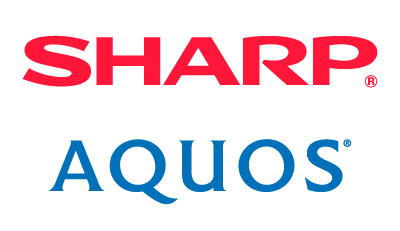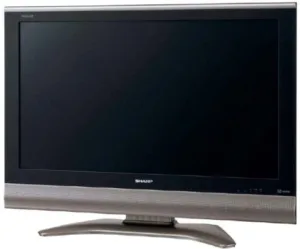A couple of months ago, in ‘What Bob Saw’, I pointed to a story that would have been almost inconceivable a couple of years ago. The story was a link to the first OLED TV from Sharp. Now, from any other TV brand (apart from Samsung), the news of an OLED TV would not be surprising, but from Sharp?

OLED TV has been very successful in establishing itself as the key technology for those that care the most about image quality. The OLED ‘brand’ has huge equity among TV geeks – and that brand value has developed over years – and this kind of association can last a long time. I have recently seen users still talking about their OLEDs ‘compared to the Kuro’ – the premium PDP that Pioneer developed and launched in 2007 before it gave up with TVs and Panasonic acquired its technology. In 2010, Panasonic claimed ‘blacks as good as the Kuro, which was not surprising, given the acquisition!
(Forgive me a small detour here. When Pioneer announced its technology, it showed it at CES 2008. At the time, the background ‘glow’ from PDP was a problem in getting a real black, as it has been for most LCDs over the years. We had several staff at CES, and I asked our TV specialist to go to the ‘real black’ demonstration as the technology geeks among us didn’t believe that it would really be black. She came back raving that ‘it really is black’, so I sent the editor of our newsletter, saying ‘I bet it isn’t’. He came back with the news ‘it really is!’. Eventually, I had to go myself and realised, it really was a true black! We rarely used the phrase ‘really amazing’ for demonstrations, but this time, we did.)
Anyway, back to Sharp. Sharp in Japan has been ‘all about LCD’ for a very long time. The company adopted LCD as a strategic technology and, in terms of the display side of the business. ‘bet the farm’ on the technology. As early as 2001, it committed itself entirely to LCD and left the CRT market. It worked on the TFT LCD technology for many applications but was the undoubted pioneer of LCD into TV.
In 2002, we reported on a new 30″ LCD TV – at that time the biggest in its range when it announced ambitious plans to take a significant market share in the European TV market (something it never really managed. The company was promoting that size as its ‘Tatami’ G6 fab in Kameyama was developing production of 1500 x 1800 mm substrates – the size of a Tatami mat used in Japan. That size of substrate allowed eight panels from one substrate – a revolution in production economics at the time. (It later add a G8 fab in Kameyama)
The high efficiency of the plant led the firm to dominate the early LCD TV market, especially under the Aquos brand. We reported in 2002 news from the Ceatec show in Japan that Sharp’s 37″ LCD TV would cost “well below $10,000”, which was a significant development at the time!
Sharp’s Pal Perfect set had great image quality, for its time, but was not ‘HD Ready’.
(Sharp’s development in Europe was not helped by the fact that it developed really good looking LCD TVs with lower resolution in 2006 and intended for SD TV viewing in Europe – and the first LCD TV that I personally might have considered buying – just as the market switched to demanding ‘HD Ready’ sets. That meant that sales of the ‘PAL Perfect’ sets stopped very rapidly and Sharp got into trouble in the UK for advertising that the sets were ‘ideal for viewing HDTV’ as they had HDMI ports. Matching the panel to the broadcast has always been a good, if unsupported, idea. I always remember the shock when a friend working for a big brand saw his new 4K TV showing heavily compressed German SD content for the first time – it was not like the demoes in the store!)

The Aquos brand did particularly well in Japan and for many years, Sharp was by far the dominant supplier in the Japanese TV market – a fact that was often missed by analysts and commentators in the West. It was very important when the ‘Perfect Storm’ of the Fukushima disaster, the switch to digital TV in Japan (before which the market boomed as people prepared) and the end of a subsidy for LCD TV to save energy combined in 2011 to deliver a huge blow to Sharp. As a result of that Foxconn (HonHai) started to acquire the business. Although Sharp’s share in Japan has dwindled over the years, Paul Gray of Omdia confirmed to me that even in 2019, the company had 29.7% of the market in Japan.
In the meantime, Sharp had extended its LCD production technology lead, building the SDP G10 plant in Sakai which came into production in 2009. It was expected to have a significant investment from Sony, which wanted to secure panel supply for its TV business, but it was eventually called off. (Sharp did not have a good reputation for looking after supply for other brands, with the Japanese Sharp TV brand always seeming to be a priority, according to those we have spoken to over the years that were involved.)
Sharp’s R&D division worked a lot on small OLEDs and made a number of presentations at conferences, including SID, about the technology. At SID 2012, the firm had an impressive 13.5″ 4K OLED. Sharp had very good IGZO TFT technology that was a big help in driving the OLEDs well. However, it didn’t develop the OLED production, although in 2008, a Japanese government initiative helped Sony, Panasonic & Sharp to work on development.
Anyway, before this becomes a book….
Now that Sharp is under the control of Foxconn, it has to react to Foxconn’s needs. Foxconn needs to develop its TV business volume as it has a lot of panel capacity in Innolux and Sharp to absorb. If that means that to help the TV brand it needs the technology that is seen as having the best performance, so be it. Still, after 50 years as ‘The LCD company’ it must be hard for some at Sharp to deal with the idea of promoting OLED! – BR

